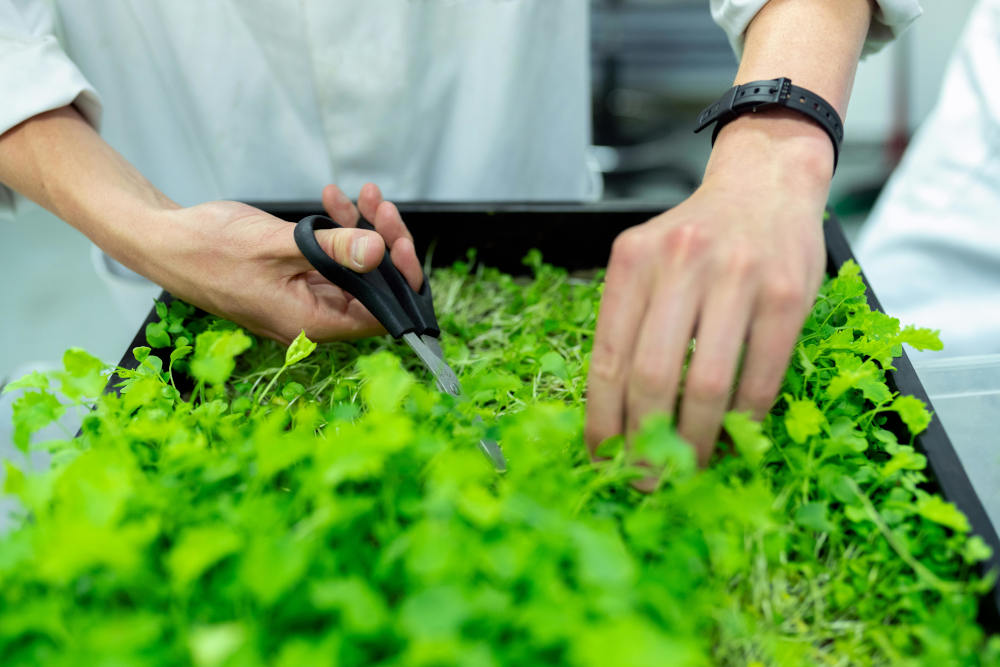
Zone 4 encompasses some of the coldest parts of the contiguous United States, with average minimum winter temperatures plunging to −30 °F and last spring frosts often hanging around June 1, according to Urban Farmer (ufseeds.com). That gives you a short growing window—usually from early June to early October—that requires careful planning, especially when starting seeds indoors.
Here’s exactly when to start vegetables, herbs, and flowers indoors, how to time it, and how to ensure success—from seed trays to transplanting outside.
Panaprium is independent and reader supported. If you buy something through our link, we may earn a commission. If you can, please support us on a monthly basis. It takes less than a minute to set up, and you will be making a big impact every single month. Thank you!
1. Know Your Frost Dates
-
Last frost: around June 1
-
First fall frost: around October 1 (homesteadandchill.com).
-
That provides an ideal outdoor growing window of approximately June through September.
For indoor seed starting, count backward from your last frost:
-
6–12 weeks before June 1 = mid‑March to early April
-
Certain crops require more time; others less.
2. What Seeds to Start Indoors—and When
Different crops demand different lead times. Here's a breakdown based on common recommendations:
🔹 Slow-Growing Vegetables & Herbs (10–12 Weeks Before Last Frost)
-
Leeks, onions, celery, parsley, artichoke, brussels sprouts, broccoli, cabbage
Sow: Mid‑March to early April .
🔹 Medium-Growing (8–10 Weeks)
-
Peppers, eggplant, cauliflower, collards, rutabaga, okra
Sow: Late March to mid‑April (extension.umn.edu, epicgardening.com).
🔹 Fast-Growing Warm-Season Veggies (4–6 Weeks)
-
Tomatoes, kale, chard, lettuce, brassicas, basil
Sow: Early to mid‑April (epicgardening.com).
🔹 Quick-Sprouting Flowers & Veggies (2–4 Weeks)
-
Marigolds, zinnias, cosmos, cucumbers, squash
Sow: Mid‑April to early May .
3. Why Indoor Starting Matters in Zone 4
-
Short season challenges: Growing seasons may be barely 120 days, making direct sowing risky for long-maturing crops (gardeningknowhow.com).
-
Extended harvest window: Starting indoors helps vegetables like tomatoes or peppers mature adequately before the first autumn frost.
4. Example Indoor Seed Schedule
Assuming a May 30–June 1 last frost:
| Seed Type | Weeks Before Frost | Sow Window |
|---|---|---|
| Leeks, onions, celery | 12 weeks | Mar 1–10 |
| Broccoli, cauliflower | 10 weeks | Mar 10–20 |
| Basil, peppers, eggplant | 8 weeks | Mar 20–Apr 1 |
| Tomatoes, chard, lettuce | 6 weeks | Apr 1–Apr 10 |
| Marigolds, zinnias, squash | 4 weeks | Apr 10–20 |
5. Indoor Seed Starting: Best Practices
-
Use a quality seed starter mix: Sterile, airy, and damp—not waterlogged.
-
Maintain proper soil warmth:
-
Cool crops: ~65–70 °F
-
Warm crops (tomato/pepper): 70–85 °F with a heat mat (extension.umn.edu, epicgardening.com, johnnyseeds.com, bhg.com, reddit.com).
-
-
Provide 12–16 h of light daily: Grow lights are preferable to avoid legginess.
-
Ensure airflow: Damping‑off is common, so ventilation is key.
-
Thin seedlings: Keep the strongest ones for best growth.
-
Pot up seedlings after 2–3 weeks to prevent root-binding.
-
Fertilize lightly once true leaves develop.
6. Hardening Off & Transplanting
-
Begin hardening off seedlings about a week before transplanting—expose them gradually to outdoor conditions.
-
Transplant after the last frost, with soil temps above 60 °F and nighttime temps staying above 50 °F.
7. What to Direct Sow Instead
Certain plants prefer direct sowing or have cold stratification needs:
-
Peas, carrots, radishes, beets, spinach, lettuce
Direct sow: Early May (~1–2 weeks before frost) . -
Poppies, larkspur, calendula: can be direct-sown early spring (sowtrueseed.com).
8. Timing Flowers
Indoor sowing times for flowers:
-
Early March: snapdragons, pansies, impatiens
-
Mid-March to early April: marigolds, calendula
-
Mid-April: zinnias, cosmos, morning glory .
9. Sample DIY Calendar
Use your frost date (e.g., June 1) to build your schedule:
-
12 wk out (Mar 10): Start onions, leeks, brassicas
-
10 wk (Mar 20): Start cauliflower, peppers
-
8 wk (Apr 1): Start tomatoes, eggplant, basil
-
6 wk (Apr 15): Start chard, lettuce, kale
-
4 wk (Apr 25): Start squash, zinnias
This phased system ensures a steady flow of seedlings and avoids overcrowding under lights.
10. Troubleshooting Tips
-
Leggy seedlings? Raise or add lights.
-
Damping‑off? Improve airflow and avoid overwatering.
-
Slow, poor germination? Check soil warmth and seed packet viability.
-
Root-bound? Again, transplant sooner.
11. Long-Season Crops & Alternatives
Some crops, like artichoke, lavender, rosemary, are slow or unreliable in Zone 4—it's often better to purchase established plants or use cuttings (ufseeds.com, bhg.com, homesandgardens.com).
12. Summary
-
Zone 4's short season demands indoor seed starts.
-
Work backward from the frost date:
-
12 weeks for slow crops
-
8–10 weeks for warm-season crops
-
4–6 weeks for fast growers
-
-
Use heat mats, grow lights, and follow seed packet instructions.
-
Harden off before transplanting after last frost.
-
Direct sow hardy crops early spring.
Final Thoughts & Further Planning
By following a structured timeline and paying careful attention to your last frost date, you can maximize your growing season, enjoy better harvests, and use your space efficiently.
Was this article helpful to you? Please tell us what you liked or didn't like in the comments below.
About the Author: Alex Assoune
What We're Up Against
Multinational corporations overproducing cheap products in the poorest countries.
Huge factories with sweatshop-like conditions underpaying workers.
Media conglomerates promoting unethical, unsustainable products.
Bad actors encouraging overconsumption through oblivious behavior.
- - - -
Thankfully, we've got our supporters, including you.
Panaprium is funded by readers like you who want to join us in our mission to make the world entirely sustainable.
If you can, please support us on a monthly basis. It takes less than a minute to set up, and you will be making a big impact every single month. Thank you.































0 comments